In the lush symphony of home gardening, few experiences compare to the simple joy of harvesting your own blackberries. These juicy, sun-kissed gems not only tantalize the taste buds but also bring a rustic charm to any garden, making them a delightful pursuit for both novice and seasoned green thumbs. Whether you’re just beginning your gardening journey or have a wealth of experience under your belt, cultivating blackberries at home can transform your outdoor space into a vibrant patchwork of life and flavor.
Blackberries are more than just a delicious treat; they are a testament to nature’s resilience and bounty. By learning to grow these robust plants, you’ll not only enjoy fresh produce but also contribute to a more sustainable lifestyle by reducing your reliance on store-bought berries. In this article, we’ll guide you through the essential steps to successfully cultivate blackberries, from selecting the perfect variety to ensuring a fruitful harvest year after year.
Prepare to dive into the world of blackberry gardening, where you’ll discover practical tips for site selection, planting, and care that cater to both small urban gardens and sprawling rural plots. We’ll explore the secrets of soil preparation, watering techniques, and pest management, ensuring your blackberries thrive no matter your level of expertise. So, grab your gardening gloves and a bit of enthusiasm, as we embark on this rewarding journey to transform your garden into a blackberry haven.
Select Suitable Blackberry Variety
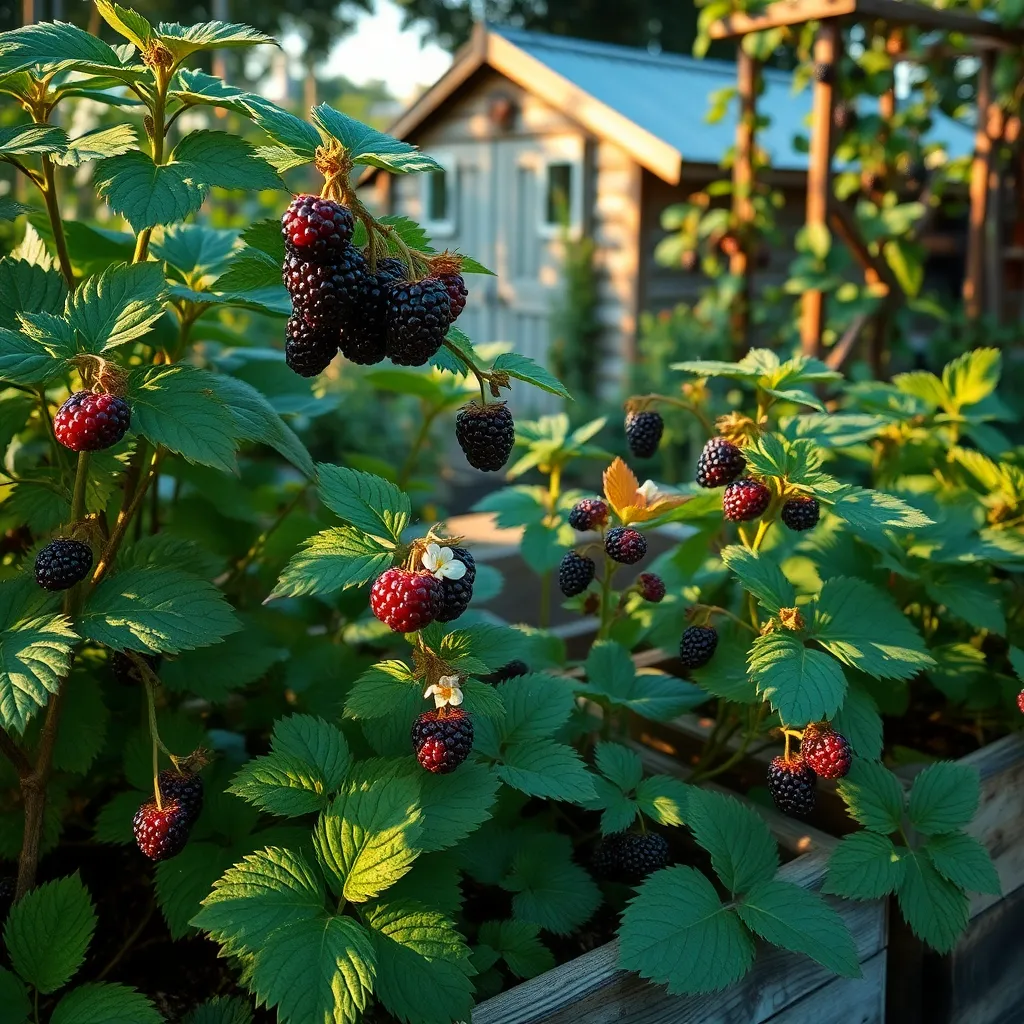
Choosing the right blackberry variety for your garden is crucial for a bountiful harvest. Consider climate compatibility as some varieties thrive better in specific temperature zones.
Beginner gardeners might start with thornless varieties like ‘Navaho’ or ‘Ouachita’, which are known for their easy maintenance. Thornless varieties also make harvesting simpler and more enjoyable.
For those in colder regions, look for cold-hardy varieties such as ‘Chester’ or ‘Doyle’, which can withstand lower temperatures. These varieties are also resistant to common diseases, reducing the need for chemical interventions.
Once you’ve selected a variety, ensure you plant them in well-drained soil rich in organic matter. Blackberries prefer slightly acidic soil with a pH between 5.5 and 6.5, which you can adjust with amendments if needed.
To encourage healthy growth, water your blackberries deeply at least once a week, especially during dry spells. Mulching around the base of the plant helps retain moisture and suppress weeds, which is essential for plant health.
Advanced gardeners can experiment with trellising to support and manage growth for varieties that produce long canes. This not only helps maximize space but also promotes better air circulation, reducing the risk of fungal diseases.
Prepare Well-Drained Soil
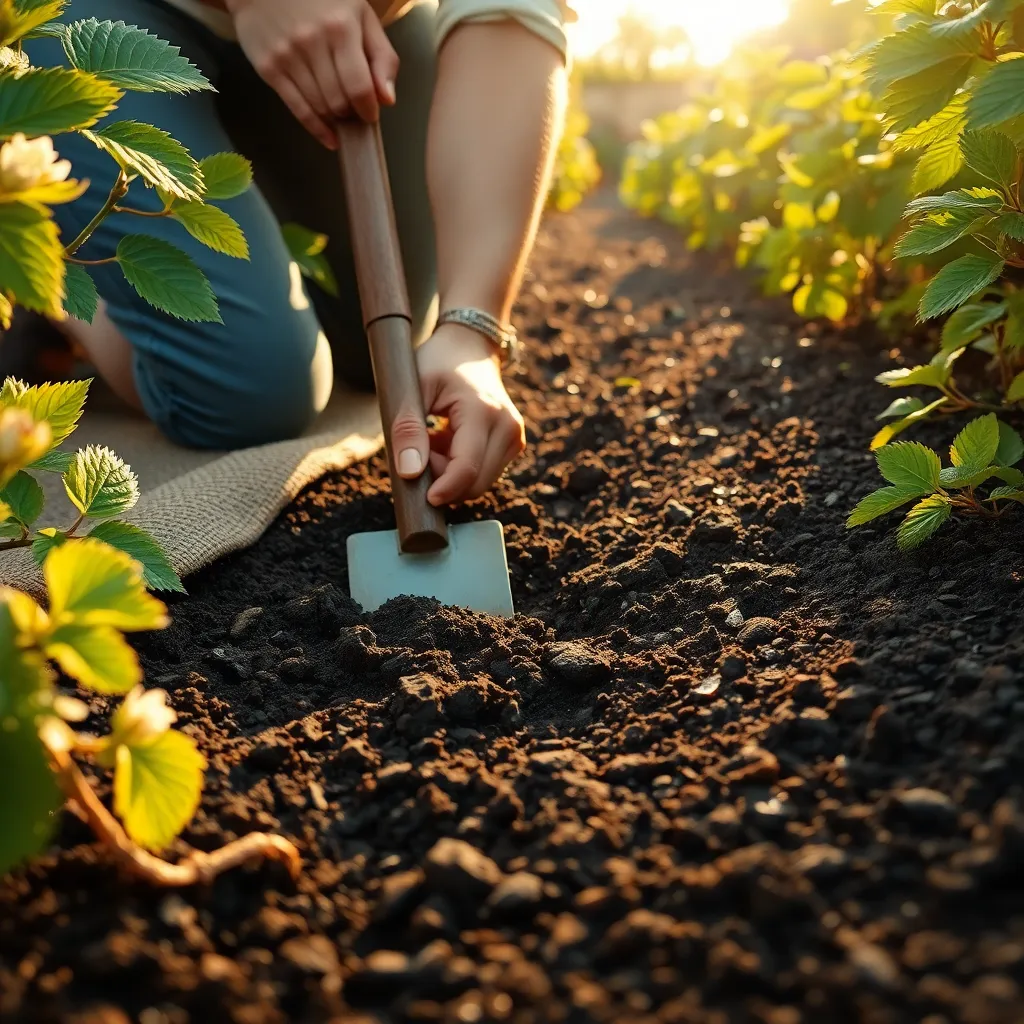
Before planting blackberries, it’s important to ensure that your soil is well-drained to prevent root rot and other water-related issues. To achieve this, consider incorporating compost or well-rotted manure into your existing soil to improve its structure and drainage.
Clay soils can be particularly challenging for blackberry plants, so it may be necessary to amend them with additional materials. Mix in sand or small gravel to increase soil porosity, allowing excess water to drain away more easily.
Testing your soil’s drainage can be a helpful step in preparation. Dig a hole about one foot deep, fill it with water, and see how long it takes to drain; ideally, it should empty within 30 minutes to one hour.
For gardeners with limited space or poor natural soil, consider using raised beds filled with a mix of topsoil and organic matter. Raised beds offer excellent drainage and can be placed in areas with optimal sunlight, providing a more controlled environment for your blackberries.
Plant in Sunny Location
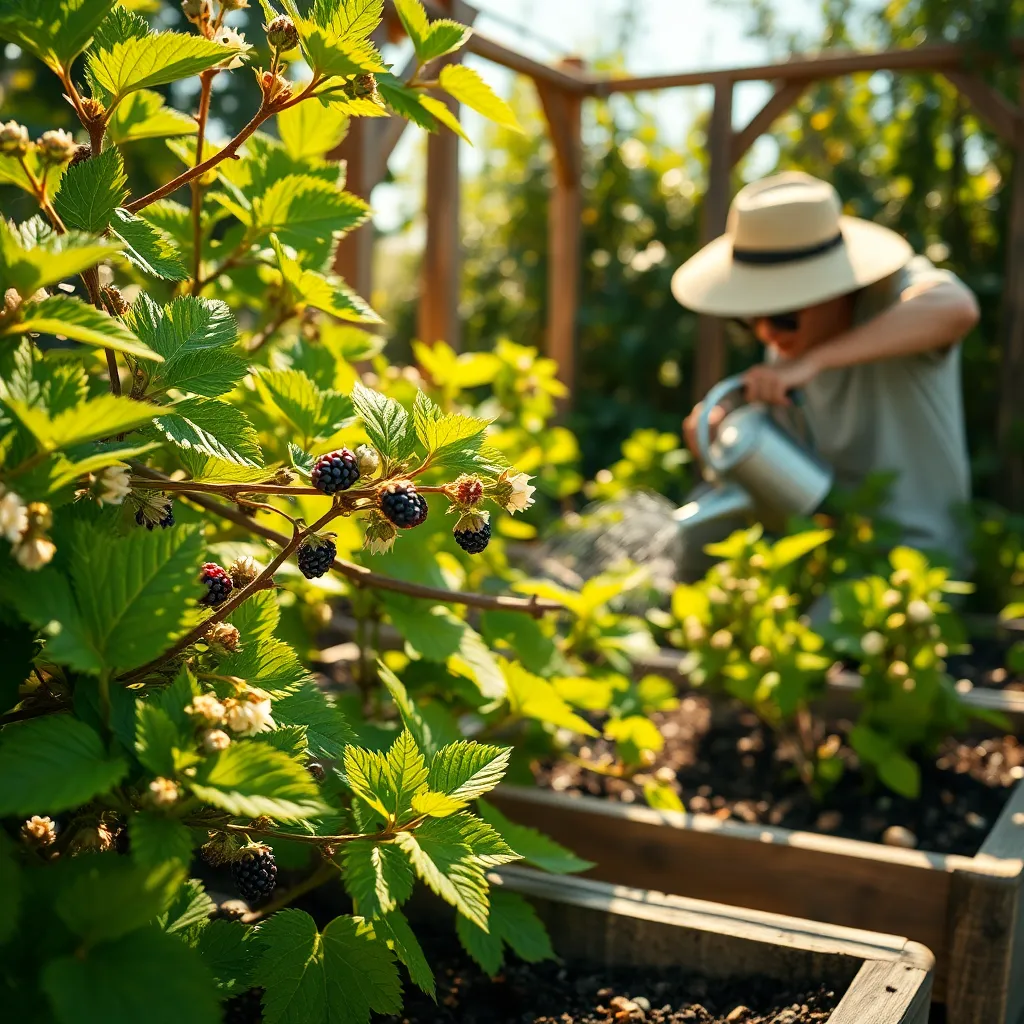
Choosing the right spot to plant your blackberries is crucial for their growth and fruit production. Blackberries thrive in full sun, requiring at least six to eight hours of direct sunlight daily to produce the best yields. When selecting a location, ensure that the area is free from shade cast by trees or buildings. This exposure to sunlight is vital not only for abundant fruiting but also for preventing fungal diseases.
In addition to sunlight, consider the wind when planting blackberries. While a gentle breeze can help with pollination, strong winds can damage the canes and reduce productivity. If your garden is exposed to harsh winds, consider using windbreaks, such as a fence or hedge, to protect your plants. Positioning your blackberries against a south-facing wall can also provide the warmth they need, especially in cooler climates.
If your garden space is limited, you can still grow blackberries successfully with a little creativity. Consider using trellises to train the canes vertically, maximizing space and ensuring each plant gets adequate sunlight. Train the canes by tying them to the trellis or support structure to prevent them from sprawling and to make harvesting easier. Regular pruning and training will keep the plants manageable and ensure optimal sun exposure.
Advanced gardeners might want to explore different blackberry varieties that suit their specific climate. Some varieties are more heat-resistant, while others are better suited for cooler regions. Researching and selecting a variety that matches your local conditions will enhance your chances of a successful harvest. With the right location and attention to detail, your blackberry plants will thrive and reward you with delicious fruits year after year.
Water and Mulch Regularly
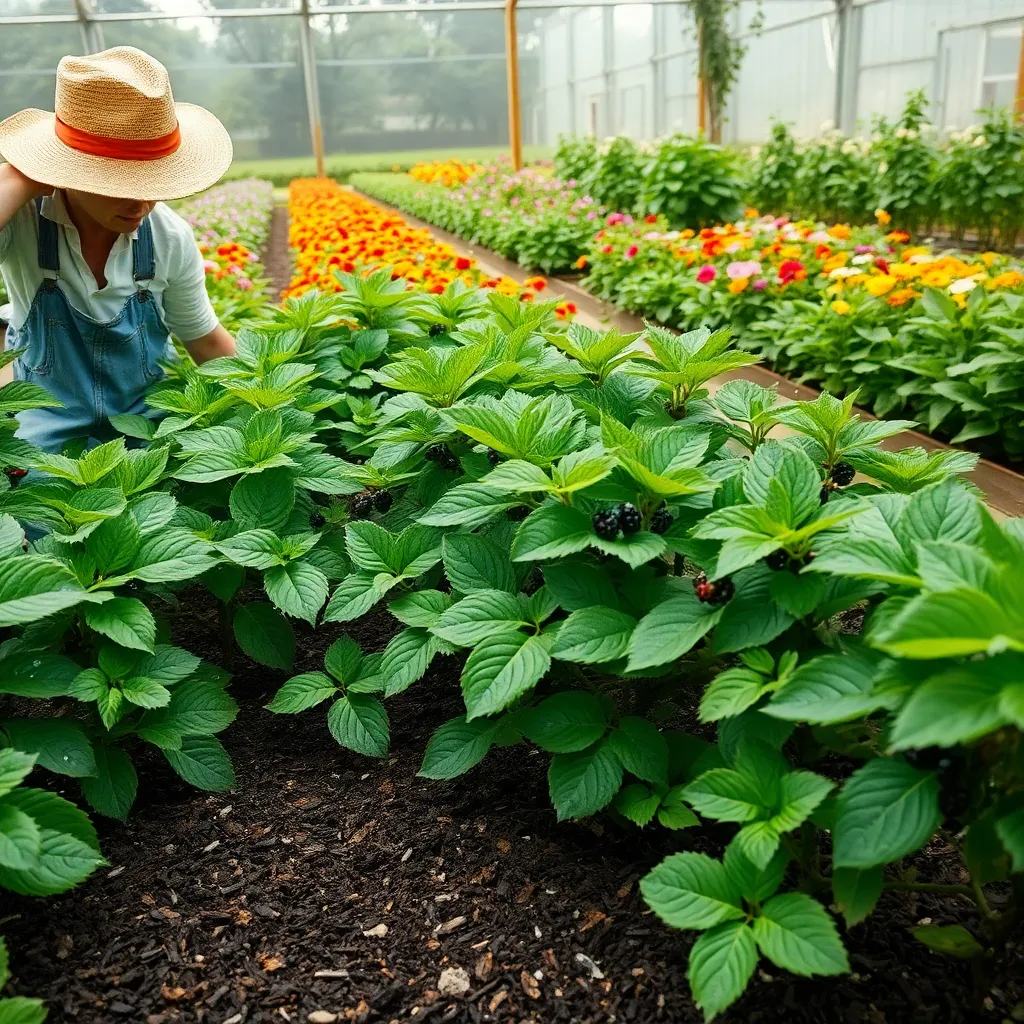
To ensure your blackberries thrive, it is crucial to water them regularly, especially during their first year. Aim to provide at least 1-2 inches of water per week, depending on rainfall, to help the roots establish firmly.
Consistent watering is essential as blackberries prefer evenly moist soil. Use a soaker hose or drip irrigation system to deliver water directly to the roots while keeping foliage dry, minimizing the risk of disease.
Mulching is another important step to maintain moisture and control weeds around your blackberry plants. Apply a layer of organic mulch, such as straw, wood chips, or pine needles, about 2-3 inches thick around the base of the plants.
This mulch layer will not only conserve soil moisture but also regulate soil temperature and improve soil health over time. For advanced gardeners, consider using compost as mulch to provide additional nutrients to your blackberries.
Remember to refresh the mulch annually to keep its benefits intact. By combining regular watering with effective mulching, you’ll create ideal growing conditions for your blackberries, encouraging a bountiful harvest.
Prune and Train Vines
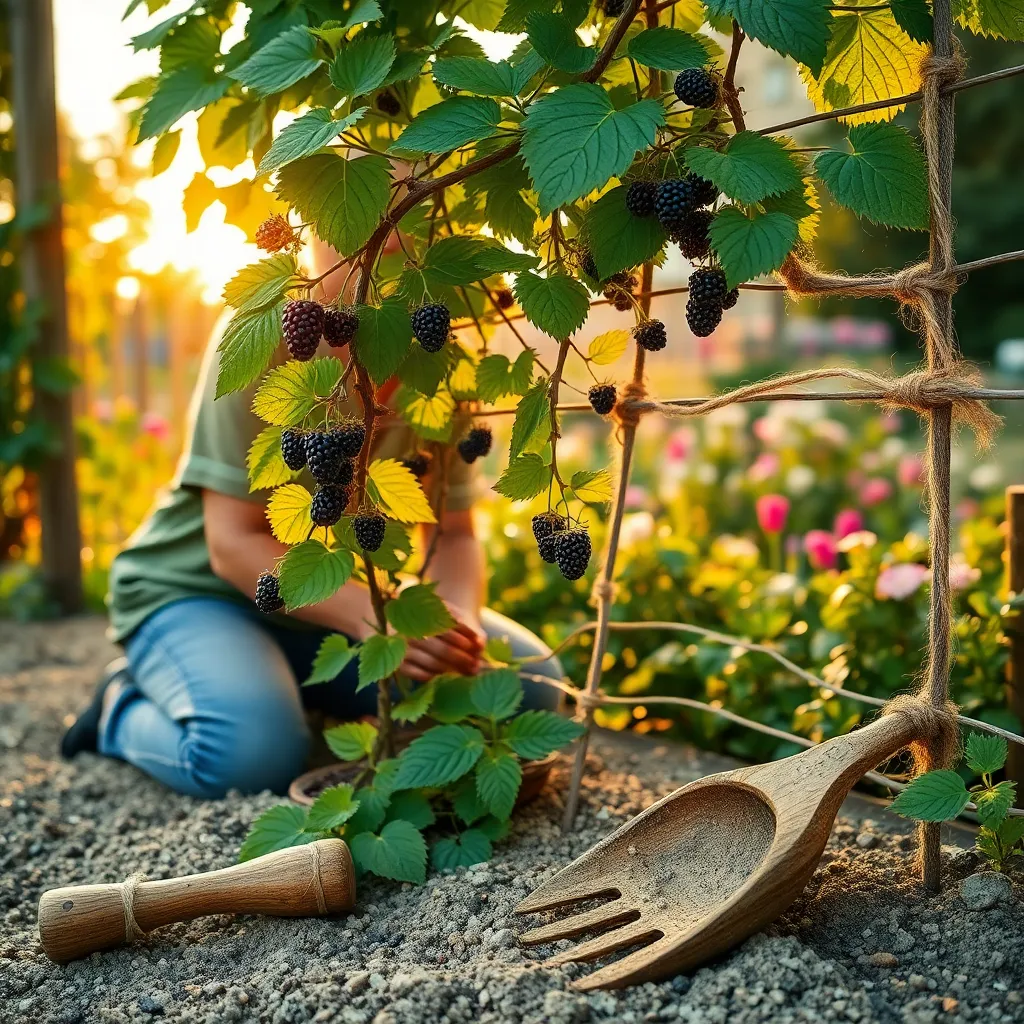
Pruning and training blackberry vines are essential steps for maintaining healthy and fruitful plants. Begin by removing any dead, damaged, or diseased canes in late winter, just before new growth starts. This practice not only enhances the overall health of the plant but also encourages robust growth and abundant fruiting.
To train the vines, use a sturdy trellis or a series of wires to support the canes as they grow. Position the wires about 3 to 5 feet above the ground, spacing them evenly to allow the vines to spread out and maximize sun exposure. Training the canes this way helps prevent overcrowding and improves air circulation, reducing the risk of fungal diseases.
Regularly tie the canes to your support system as they grow, using plant-friendly materials like soft twine or garden tape. This not only keeps the canes upright but also makes harvesting easier and more efficient. Remember to handle the canes gently to avoid damaging them while securing them in place.
For advanced gardeners, consider tip pruning during the growing season to encourage lateral branching and more fruit production. Clip the tips of the canes by a few inches, which redirects the plant’s energy to developing side shoots. This technique results in more fruit-bearing branches and a higher yield at harvest time.
Conclusion: Growing Success with These Plants
In nurturing your blackberry plants, you’ve explored five essential relationship concepts: the importance of choosing the right variety, understanding your partner’s needs (just like soil and sunlight for your berries), the art of consistent care, the patience to see gradual growth, and the joy of reaping the harvest together. These principles aren’t just for the garden; they mirror the nurturing needed in relationships. Just as with blackberry cultivation, love requires the right environment, attentive care, time, and shared joy.
As your actionable step, take a moment to identify one area in your relationship that could use a bit more “fertilizer” — whether that’s more communication, quality time, or understanding. Implement a small change today, and watch your relationship thrive.
Remember, relationships, like gardens, flourish with ongoing attention. Bookmark this article as your go-to guide for both blackberry and relationship growth. As you cultivate these practices, you’re setting the stage for a bountiful future in your personal connections. Embrace the journey, and let this be the beginning of many fruitful seasons to come. Save this article for guidance, and enjoy the sweet rewards of your efforts.
